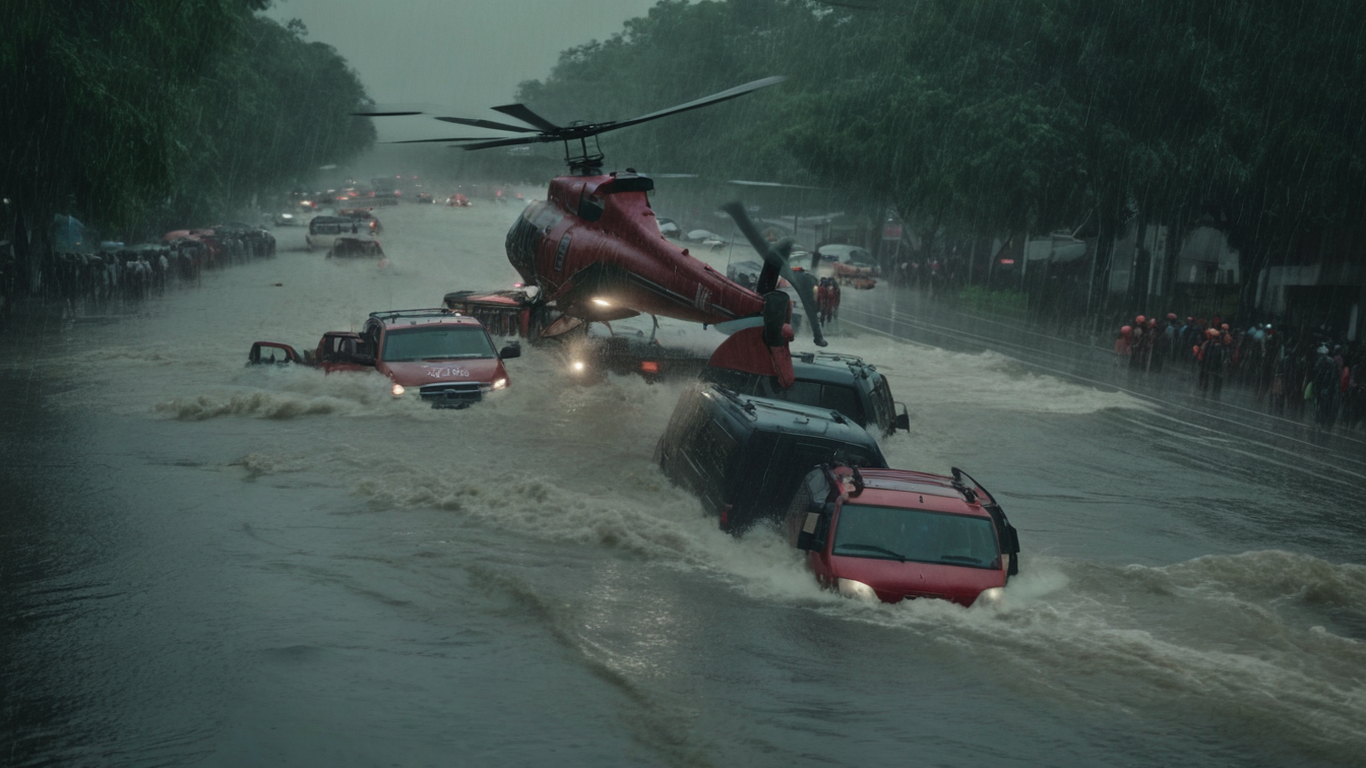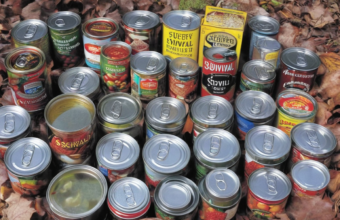Survival Skills Every Patriot Family Should Know – Preparing for the Unexpected
In the unpredictable world we live in, being prepared is not just a suggestion, but a necessity. For the patriot family, mastering survival skills can make all the difference when the unexpected occurs.
From navigating the wilderness to sourcing food and water, these skills are essential for self-reliance. Each family member, regardless of age, can contribute to the family’s survival, making these skills an empowering tool for unity and resilience.
This post will delve into the practical, hands-on knowledge that every patriot family should possess. It will guide you through the fundamental survival skills, ensuring that your family is prepared for any situation. So, whether you’re a seasoned prepper or a beginner, you’re in the right place. Let’s journey together into the world of survival skills, where preparedness meets patriotism.
What Is Wilderness Survival?
Wilderness survival refers to the critical skills and knowledge required to stay safe and alive in the great outdoors. It’s a key aspect in the realm of urvival Skills Every Patriot Family Should Know. These abilities enable individuals to handle emergency situations, navigate through unfamiliar terrain, and secure basic necessities like food, water, and shelter.
Wilderness survival skills include understanding how to build a fire, even in adverse conditions. This skill not only provides warmth but also aids in cooking food and purifying water. Next, knowing how to construct a shelter from natural materials is a must. It can protect you from harsh weather conditions and wildlife.
Additionally, proper navigation skills are crucial. Even with GPS technology, understanding how to use a compass and read a map can be lifesaving.
A significant part of wilderness survival is also knowing how to find and purify water. Water is a basic human need, and the ability to locate a water source can make a difference between life and death.
Lastly, the ability to identify edible plants and insects can supplement the food obtained from fishing or hunting.
Wilderness survival isn’t just about physical skills; it’s also about mental strength. Staying calm, focused, and positive can help you make rational decisions and persevere through challenging situations.
Remember, practicing these skills before an actual emergency can significantly increase your chances of survival.
How To Purify Water?
Purifying water is a critical survival skill every patriot family should have in their arsenal. It can be the difference between health and disease, even life and death. One simple method of water purification is boiling. This process kills most types of bacteria, viruses, and parasites. It’s important to bring the water to a rolling boil for at least one minute to ensure its safety.
Another method is using water purification tablets. These small tablets contain chemicals that kill bacteria and viruses, making the water safe to drink. Follow the instructions on the packaging for best results.
A more advanced technique is using a water filter. These devices physically remove bacteria, viruses, and other contaminants from the water. Some filters also contain activated charcoal, which can remove chemicals and improve the taste of the water.
Lastly, the sun’s ultraviolet rays can also purify water. This method, known as solar disinfection, involves filling a clear plastic bottle with water and leaving it in direct sunlight for at least six hours.
Remember, safe water is essential for hydration, cooking, and hygiene. Mastering the skill of water purification can be a lifesaver in a survival situation.
Can You Eat Wild Plants?
In the wilderness, knowledge of wild plants can be a lifesaver. Many wild plants are not only edible but also nutritious and can provide much-needed sustenance when food supplies run low. However, it’s crucial to understand that not all wild plants are safe to eat. Some can be toxic, causing severe illness or even death. Therefore, learning to identify safe plants is a vital survival skill.
Foraging for wild plants requires careful identification. Misidentification can lead to consuming poisonous species. Field guides and survival manuals can be useful tools for learning about local flora. Some common edible wild plants include dandelions, clover, and cattails, which are found in many parts of North America.
Eating raw plants is not always safe, even if they’re non-toxic. Cooking can help kill bacteria and parasites that might be present. It’s also important to remember that some plants can be eaten in moderation but may cause problems if consumed in large quantities.
Water purification is another consideration when foraging for wild plants. Many plants, especially those growing near water sources, can absorb pollutants. Boiling or filtering water used to cook or wash plants can help reduce this risk.
Survival skills like these are essential for any patriot family. Knowing how to safely utilize the natural resources around you can make a significant difference in a survival situation. Knowledge of wild plants is just one aspect of a comprehensive survival skillset.
How To Start A Fire Without Matches?
Starting a fire without matches is a crucial survival skill that every patriot family should be familiar with. It might seem daunting at first, but with practice and patience, it becomes second nature. The first method to consider is the Hand Drill technique. This primitive method involves spinning a stick into a base of dry wood to generate friction, and consequently, heat.
Another popular method is the Fire Plow. This involves carving a groove in a piece of wood and vigorously rubbing another stick down this groove. The friction created by this action produces hot dust that can ignite into a flame.
These methods require dry materials, so always ensure you have a dry bundle of tinder to catch the sparks. Another technique to consider is the Flint and Steel method. Striking a piece of flint against steel can create sparks hot enough to ignite dry tinder.
Lastly, the Lens method is a great option if you have a magnifying glass, eyeglasses, or anything similar. By focusing sunlight through the lens onto a small pile of dry tinder, you can start a fire.
Remember, fire safety is paramount. Always ensure your fire is fully extinguished before leaving it unattended. These survival skills can help ensure your family’s safety and comfort in any situation.
What Are Essential Survival Tools?
Survival tools are the backbone of any successful survival strategy. They are designed to aid in emergency situations, providing necessary functions such as shelter building, food procurement, and self-defense. A well-equipped survival kit should include a multi-tool, a versatile piece of equipment that combines several tools in one compact design. This includes a knife, a saw, a can opener and other useful tools.
A fire starter is another essential survival tool. It provides a reliable method to start a fire, crucial for warmth, cooking, and signaling for help. High-quality fire starters are designed to work in any weather conditions, making them a critical tool for survival.
Water purification methods are also vital. This can range from simple iodine tablets to more sophisticated water filters that remove bacteria and other harmful pathogens. Clean water is a fundamental requirement for survival, making this an indispensable tool.
In the realm of navigation, a compass and map are essential tools. These can guide you to safety in unfamiliar terrain. Lastly, a first aid kit is a must-have. It should include bandages, antiseptic wipes, tweezers, medical tape, and other necessary supplies.
Remember, each survival situation is unique, and the tools needed may vary. However, these items provide a solid foundation for any survival kit, ensuring you are prepared for any situation.
How To Build A Shelter?
Building a shelter is an essential survival skill that every patriot family should know. A well-built shelter can protect you from harsh weather conditions and dangerous wildlife. The first step in building a shelter is to choose a suitable location. It should be on dry ground, away from falling branches or flooding risks, and close to resources like water and firewood.
Next, gather materials. Depending on your environment, these could include branches, leaves, or snow. A lean-to shelter is one of the easiest to construct. Start by finding a long, sturdy branch to serve as your ridgepole. Lean this against a tree or two closely spaced trees. Smaller branches can then be leaned against the ridgepole to create a frame. Cover this frame with leaves, grass, or other available materials to insulate and waterproof your shelter.
Remember, the goal is not comfort but survival. Your shelter should be just big enough for everyone to fit inside to conserve body heat. Always consider the weather conditions and adjust your shelter accordingly. In cold weather, for example, you might need to build a fire or create a snow cave for insulation.
Building a shelter is a vital survival skill. With practice and knowledge, any patriot family can master this skill, ensuring their safety and survival in any situation.
What Is First Aid In The Wilderness?
First aid in the wilderness is an essential survival skill that every patriot family should know. It involves immediate care given to a person who has been injured or suddenly taken ill in a remote or non-urban setting. Unlike traditional first aid, wilderness first aid requires improvisation due to limited resources, and it often involves long-term care until help arrives.
Some common situations that might require wilderness first aid include hypothermia, dehydration, fractures, burns, and snake bites. It is crucial to know how to assess the situation, prioritize care, and execute appropriate treatment with the available resources.
- Recognize the signs of distress: It’s important to identify symptoms of common wilderness injuries such as heatstroke, frostbite, or animal bites.
- Use of natural resources: In the absence of medical supplies, knowing how to use natural resources can be lifesaving. For instance, moss can be used as a bandage, and certain plants have antiseptic properties.
- Emergency signaling: If you’re stranded, knowing how to signal for help is essential. This could be creating a smoke signal or using a mirror to reflect sunlight.
Understanding wilderness first aid is not just about treating injuries; it’s about prevention and being prepared for any situation. It’s a crucial skill that can make the difference between life and death in a survival situation.
How To Navigate Without A Compass?
Navigating without a compass is a vital urvival skill for any patriot family. One of the most effective methods is using the sun. The sun rises in the east and sets in the west, providing a basic sense of direction.
At night, the North Star, or Polaris, is a reliable guide. Locate the Big Dipper constellation and draw an imaginary line from its two outermost stars to find Polaris.
Another method is to use the shadow-tip navigation. Place a stick vertically into the ground and mark the tip of its shadow. Wait for about 15 minutes and mark the new position of the shadow tip. The line connecting these two points roughly indicates the east-west line.
Observing the environment can also help. In the Northern Hemisphere, moss tends to grow on the north side of trees due to less sunlight. Similarly, snow melts slower on the north side of slopes and hills.
Landmarks are also helpful. Choose a distinctive feature in the distance and walk towards it, then choose another once you reach the first.
Remember, these methods are not as accurate as a compass, but they are essential urvival skills that can help in an emergency. Practice these techniques to become proficient in navigating without a compass.
Wrapping Up: Survival Skills Every Patriot Family Should Know
In conclusion, acquiring survival skills is a crucial aspect for every patriot family. The topics we’ve covered provide a comprehensive understanding of the essentials, from understanding wilderness survival to navigating without a compass.
The art of purifying water, consuming wild plants safely, and starting a fire without matches are skills that not only ensure survival but also foster resilience and adaptability. The importance of having essential survival tools, building a shelter, and administering first aid in the wilderness cannot be overstated.
These skills equip you to face any adversity and instill a sense of self-reliance and confidence. They are not just for survival but also for embracing a lifestyle that values preparedness, resourcefulness, and independence.
In the future, the significance of these skills will only increase as we face more unpredictable scenarios due to climate change and other global trends. Therefore, it’s advisable to continue learning and adapting to new survival techniques and tools.
Remember, survival is not just about enduring a tough situation; it’s about thriving in it. Stay prepared, stay safe, and pass on this invaluable knowledge to the next generation.











